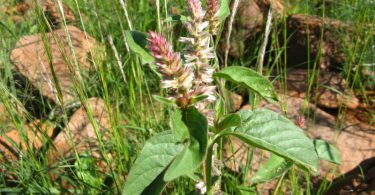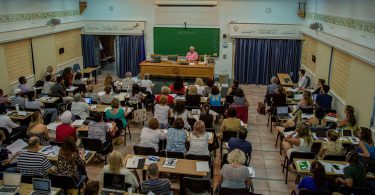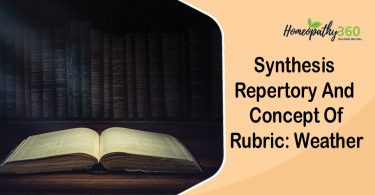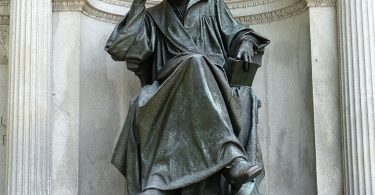
Abstract
Life style diseases a disease associated with the way a person or group of people lives. Common life style disorder in modern era – Stroke, Type II DM, COPD, IBS, spondylosis, arthopathy. Type II DM is one of our global burning life style disorder. Diabetes is an ‘iceberg’ disease. Now a days DM shape like a pandemic and dreaded disorder. If well managed diabetic patient has a good life expectancy.
Keywords – Lifestyle disorder, Type II DM, immune suppression, Homoeopathy
Abbreviations: Diabetes mellitus (DM), CHRONIC OBSTRUCTIVE PULMONARY DISORDER (COPD), Irritable bowel syndrome (IBS) , glucose tolerance test (GTT)
INTRODUCTION –
Lifestyle diseases include – atherosclerosis, heart disease and stroke. These lifestyle diseases which take years to develop and once encountered do not lend themselves easily to cure. Lifestyle diseases are different from other disease because they are potentially preventable, and can be lowered with changes in diet, lifestyle and environment.
Factors responsible – changing in dietary habit, nutritional supplements, daily physical activity, abuse of drugs, resistant to antibiotics, immune-suppression, misbalance of the whole ecological environment.
It is said that in 20th century the great achievement in medical science, is the knowledge gained about the genetic code. If well used of this discovery, it may help man from the diseases of inheritance, Diabetes is one such disease where heredity plays a very important role.
Present scenario1,2,3,4:
- Although increase in both the prevalence and incidence of Type 2 diabetes have occurred globally, they have been especially dramatic in societies in economic transition, in newly industrialized countries and in developing countries.
- Globally, it is estimated that 366 million people had diabetes in 2011 and this figure is expected to 552 million by 2030.
As per the WHO, diabetes mellitus is a heterogeneous metabolic disorder characterised by common feature of chronic hyperglycaemia with disturbance of carbohydrate, fat and protein metabolism.
- It is a clinical syndrome characterised by high blood sugar level (hyperglycaemia) and glycosuria , due to relative or absolute deficiency of insulin secretion and/ or action that leads to disturbances in carbohydrate, protein and fat metabolism.
- In a easier way, it is a clinical syndrome characterised mainly by polyuria, polydipsia, and polyphagia due to absolute deficiency of insulin or diminished biologic effectiveness of it or both.
Old ‘WHO’ Criteria5,6:
- 1. Fasting (overnight): Venous plasma glucose conc. > 140 mg/dl on at least 2 separate occasions.
- 2. After ingestion of 75 gm glucose (postprandial) : Venous plasma glucose conc. > 200 mg/dl at 2 hour and on at least one other occasion during the 2-hrs test, i.e, 2 values >200 mg/ dl must be obtained.
- Impaired glucose tolerance test (GTT) – The 2-hr value is b/wn 140-200 mg/dl and one other value during the 2 hrs test is> 200 mg/dl.
(New) WHO Criteria:
- FPG < 110 mg/ dl = Normal
- FPG > 110 mg/dl and < 126 mg/dl = IFG
- FPG > 126 mg/dl = Provisional diagnosis of DM.
- ORAL GTT-
- 2-h postload glucose (2 hPG) < 140 mg/dl = Normal
- 2hPG > 140 mg/dl and 200 mg/dl = IGT
- 2hPG > 200 mg/dl = Provisional diagnosis of DM
HbA1c > 48mmol/L (6.5%), But below doesn’t exclude DM.
CLASSIFICATION1,2,3,6:
- Type 1 – Immune-mediated, idiopathic.
- Type 2
- Gestational diabetes.
- Other specific types – 1. Genetic defects of Beta cell function (Monogenic DM) :
MODY – there is a strong family history of very mild form of DM having autosomal dominant transmission and a mutation of the glucokinase gene that impairs insulin secretion.
- MODY 1 – Long arm of Chromosome (20q), Common in teens to 30 yrs, Microvascular complications frequent.
- MODY 2 – Genetic defect is at the glucokinase gene, Short arm of chromosome (7p), Present from birth.
- MODY 3 – Long arm of Chromosome (12q),Commonest type in teens under 20 yrs.
- MODY 4 – Chromosomal DEFECT 13q, rare.
- MODY 5 – Chromosomal DEFECT 17q, rare, seen in teens to 20 yrs.
In all these cases, hyperglycaemia due to impaired Beta cell function. No significant insulin resistance. Diet regime or Oral hypoglycaemic agents can correct hyperglycaemia. Insulin is rarely needed.
2. Genetic defects of insulin action ( leprechaunism, lipodystrophies)
3. Pancreatic disease –
4. Excess endogenous production of hormonal antagonists to insulin -(GH, Cortisol, Glucagon, Catecholamine, Thyroid)
5. Drug –induced
6. Uncommon forms of immune-mediated diabetes – IPEX Syndrome (Immune dysregulation , polyendocrinopathy, enteropathy, X- linked)
7. Associated with genetic syndromes – Down syndrome; Klinefelter’s syndrome; Turner’s syndrome ;DIDMOAD (Wolfram’s syndrome); Friedreich’s ataxia
POTENTIAL DIABETIC5: No symptoms and show no abnormality on /E or by GTT but are susceptible to develop diabetes in any time of their life.
- Criteria – When one parent is diabetic, other have F/H; Both parents DM and Mother of a ‘Herculean baby’
Pre-diabetes5 – Patients with IGT and / or IFG.
Latent diabetics5 – are person who show impaired GTT under stressful conditions – pregnancy, infections, physical and mental stress or when over-weight.
Type 2 DM1,2,3,6:
IDDM and NIDDM a MISNOMER? It was previously known as ‘non-insulin-dependent diabetes mellitus’ (NIDDM), because patients retain the capacity to secrete some insulin but exhibit impaired sensitivity to insulin (insulin resistance) and initially can usually be treated without insulin replacement therapy. However, 20 % or more of patients with type 2 will ultimately develop profound insulin deficiency requiring replacement therapy.
Natural History of Type 2:
In the early stage of the disorder, the response to progressive insulin resistance is an increase in insulin secretion by the pancreatic cells result in hyperinsulinaemia , Beta cell unable to compensate adequately and blood glucose rises; hyperglycaemia; further Beta cell failure, glycaemic control deteriorates and treatment requirements escalate.
Some patients develop DM at a young age, usually driven by insulin resistance due to obesity and ethnicity; others, particularly the elderly, develop DM despite being non-obese and may have more pronounced Beta cell failure.
INSULIN RESISTANCE:
- IGT, Is one of a cluster of conditions thought to be caused by resistance to insulin action.
- Patients with this type often associated – hypertension, dyslipidaemia, non alcoholic fatty liver, PCOS these are termed as ‘insulin resistance syndrome’, more common in obese.
Pancreatic Beta cell failure:
- Reduction in the total mass of pancreatic islet is modest.
- At the time of diagnosis, 50% of Beta cell function lost and declines progressively.
Genetic predisposition:
- Monozygotic twins where concordance rates for type 2 nearly 100%.
- Family history +, inheritance is polygenic/ heterogenous.
- Largest effect in variation with TCF7L2.( Beta cell functioning, regulation of cell cycling and turnover)
Environmental and other factors:
- Overeating combined with obesity and under activity.
- Risk of developing Type 2 – increases 10th fold in people with a BMI of < than 30 kg/m2.
- More common in the middle aged and elderly.
PATHOGENESIS6:
- So far from the discussion it is clear that, DM it is a complex affair. Lacks of insulin, presence of insulin antagonists, excessive neoglucogenesis, viral infection, HLA system, heredity, autoimmunity are possibly responsible for the development of DM.
- Lack of insulin —–blood sugar raises——crosses renal threshold level ——glycosuria.
- Increases the osmolarity of glomerular filtrate ——–diuresis, associated with hyponatremia, kalaemia, magnesemia ——- thirst, dehydration, shock etc.
- Sugar not burnt, adequately for energy requirement ——– fat mobilised from the adipose tissue ——- Accetyl co-enzyme-A accumulates—– form KETENE BODIES—Ketonuria .
- Incompletely metabolized carbohydrate accumulate ——Diabetic Ketoacidosis —- coma.
- Continuous loss of sugar in urine ——-Neoglucogenesis ——-wasting of muscle.
CLINICAL FEATURES5,6:
Type 2
- Middle to old age, Family h/o- POSITIVE.
- Gradual onset of osmotic symptoms, ASYMPTOMATIC. Recognized by microvascular or macrovascular symptoms – delayed wound healing, gangrene, peripheral neuropathy.
- Patient are frequently obese and unexplained weakness and loss of weight.
- Non ketotic hyperglycemic coma.
- Insulin levels are normal or high, Glucagon high/ resistant.
COMPLICATION5,6
Outcome of such conditions in the beginning is promising, the continuation is less favorable, and the outcome hopeless
- EARLY: Hyperosmolar hyperglycaemic non-ketotic coma; Lactic acidosis; Acute circulatory failure.
- LATE- Microangiopathy-
Retinopathy- Type 1 (90%), Type 2 (15-20%). Non- retinopathic, retinopathic.
Neuropathy- Type 1 (60%), Type 2 (60%). Peripheral neuropathy, Autonomic neuropathy.
Nephropathy- Type 1 (30-40%), Type 2 (3-15%). Diffuse, nodular glomerulosclerosis, papillary necrosis
Macro-angiopathy – Cardiovascular complication, peripheral vascular disease, cerebrovascular disease.
Gastrointestinal disorder- gastroparesis, chronic gastritis, pancreatitis, fatty liver, acalculous cholecystitis.
Recurrent infection; diabetic foot; dermatological –
Investigation5:
BLOOD TESTING: A. Sugar (fasting, Post prandial), Glycosylated haemoglobin (HbA1, HbA1c)
B. Complete blood count, Erythrocyte sedimentation rate, Lipid profile , Urea, Creatinine, Uric acid
URINE TESTING: A. Urine routine and microscopic
Ophthalmoscope examination; Nerve conduction study; Doppler studies for peripheral vessels, Capillary morphometry.
PREVENTION and CARE6
AIMS OF TREATMENT-Control of hyperglycaemia and glycosuria; Prevention of early and late complication; Maintenance of appropriate body weight.
Methods of Treatment-
- Type 2 DM – Diet, exercise, oral drugs, Insulin.
Side effects of Insulin-
- Hypoglycaemia
- Insulin lipodystrophy – Thickening of subcutaneous fat.
- Antibody formation
- Pre-breakfast hyperglycaemia – Somogyi effect, Dawn Phenomenon
SOLUTION(4) –
As DM is a Non-communicable disease, measures should be fully integrated into other community- based programmes for the prevention.
PRIMARY PREVENTION-
A. POPULATION STRATEGY – In type 1 it is limited, but in type 2 based on elimination of environmental risk factors is possible. There is presenting need for PRIMORDIAL PREVENTION.
B. HIGH-RISK STRATEGY- Type 2 linked with sedentary life style, over-nutrition and obesity, correction of these may reduce the condition. Avoids – alcohol, OCP, Smoking etc.
SECONDARY PREVENTION- Check each visit – blood sugar, urine for protein and ketones, blood pressure, visual acuity, weight, glycosylated haemoglobin etc. Special measure on complicated or acute condition.
TERTIARY PREVENTION- DM is a major cause of disability through its severe complications. The main objects at this level is to organise specialised clinics and basic, clinical and epidemiological research
PRESENT STATE: Unfortunately, there is still inadequate awareness about the real dimension of the problem among the general public. There is also a lack of awareness about the existing interventions for preventing DM and the management of complications. Inadequacies in Primary health care systems, which are not designed to cope with additional challenges poses by the chronic non-communicable diseases, result in poor detection of cases, suboptimal treatment and insufficient follow up leading to unnecessary disabilities and severe complication, often resulting in early death.
EVOLUTION OF CONCEPT OF MIASMATIC BACKGROUND (7,8,9):
- Hahnemann in his book ‘Chronic Disease’ regarded diabetes as secondary manifestation of PSORA which is caused by suppression of itch.
- He had described the symptoms of Diabetes ‘At time too much urine is discharged, succeeded by great weariness’ and In footnote, he mentioned ‘Diabetis, has probably never of any other origin than this malady (Psora).’
- H. A. Roberts, J. H. Allen all were of the same opinion that Psora alone never reaches to such pathological extent, diabetic patient are usually tubercular, if sycotic taint – the condition becomes more malignant in their nature and more fatal.
Homoeopathic management –
Abroma augusta10– Almost constant dryness of the mouth; drinks large quantities of cold water at a time yet dryness persists; dry and clean tongue; lips dry and bluish. Desire to drink after urination which relieves thirst; Diabetes mellitus; nocturnal enuresis; white ulcers in the mouth of prepuce caused by excessive passage of sugar in the urine
Aceticum acidum10,11,12– Abundant sugar in urine. Urine increased in quantity; pale; phosphatic; Diabetes, with intense burning, unending and unquenchable thirst and great debility. Gangrenous ulcer.
Calcarea phosphorica10,11,12 – Glycosuria when lungs are implicated, diminishing the quantity of urine and lowering its specific gravity; sore aching in bladder, <after urinating. Carbolicum acidum10,11,12– Irritable bladder in old men with frequent urination at night, the urine containing sugar; albuminuria, urine of high specific gravity; urea abundant. unusual appetite and thirst for stimulants; great languor and profound prostration.
Cephalandra indica10 – Dryness of mouth with great thirst for large quantity of water at a time. Dryness of throat. Profuse urination; weakness and exhaustion after urination; sugar in the urine; diabetes mellitus.
Coca10 – Diabetes, with impotency.
Curare10,11,12– Diabetes. Clear and frequent urine, with digging crampy pains in kidneys; dry mouth; great thirst; especially evening and at night; sugar urine, with great emaciation; (acute diabetes). Glycosuria with motor paralysis. Reflexes diminished or abolished.
Gymnema sylvestre10 – ‘Sugar-killer’- excellent medicine for diabetes mellitus, profuse urination loaded with sugar. After passage of wine patient exclaims, ‘this passing of urine in large quantities has made me very weak’, copius; specific gravity- high. Burning all over the body; diabetic carbuncle.
Helonias dioica10,11 – Pain in the kidney with albuminous urine. Weariness, languor, desire frequent and urging. Involuntary discharge of urine after the bladder seemed to be emptied. Urine profuse, clear, light coloured; diabetes.
Insulinum10 – An active principal from the pancreas which affects sugar metabolism. Beside the use of Insulin in the treatment of diabetes, restoring the lost ability to oxidize carbohydrate and again storing glycogen in the liver, some use of it homoeopathically has been made by Dr Wm. F. Baker, showing its applicability in acne, carbuncles, erythema with itching eczema. In the gouty, transitory glycosuria when skin manifestations are persistent give three times daily after eating. Given a persistent case of skin irritation, boils or varicose ulceration with polyuria, it is indicated.
Kalium bromatum10,11,12 – Emaciation, paleness, skin cold and dry, pulse rapid and feeble, tongue red and tender, gums spongy and bleeding; appetite voracious; urine pale, frequent, of great density, and loaded with sugar
Lacticum acidum10,11,12 – Frequent pain in kidney. Frequent desire to urinate large quantities day and night; the attempt to retain it causes pain. Excessive thirst; tongue dry, sticky; gastric ailments; debility and emaciation; feels constantly tired and exhausted from slightest exertion
Lycopus virginicus10,11,12– Drinks large quantities of water; passes nine to eleven quarts of urine a day; fearful thirst, nothing but coldest water would satisfy; copious flow of clear urine of great density. Urine scanty, thick, muddy, oedema of feet; cloudy; Diabetes mellitus and insipidus from some derangement of the central nervous system
Magnesia sulphurica10,11,12 – Gloominess, especially mornings, and disinclination for work; mouth and throat very dry, as if numb, with a sweetish-bitter taste, in the morning, disappearing after breakfast; aversion to all food. The urine passed in the morning copius, bright yellow, soon becomes turbid, and deposits a copius red sediment. Erections without desire for an embrace
Medorrhinum10,11 – A family history of gonorrhoea, aggravation of all symptoms from sunrise to sunset, amelioration at the sea-shore, albuminuria, glandular enlargements, difficulty in mental concentration, impatience are the guiding symptoms to the use of this remedy in Diabetes. Dryness of mouth; Ravenous appetite, immediately after eating. Neuropathy, burning of the palms and the feet, which though cold to touch, are better when uncovered and fanned.
Moschus11,12 – Unquenchable thirst; great emaciation; frequent passage of large quantities of saccharine urine; impotence occasioned by a cold; preceding diabetes. Paralytic condition of the brain; dimness of sight; great dryness of the mouth and putridtaste; prickling in the skin; general exhaustion, with coldness all over.
Natrum sulphuricum10,11,12 – dryness and burning in the eyes; dryness of mouth and throat; great thirst for very cold drinks; voracious appetite, disgust while eating; foetid flatus; increased urination, especially at night; Urine scanty; dark and passed more frequently, has to get up several times at night.
Phosphoricum acidum10,11,12 – Debility is very marked in this remedy, producing a nervous exhaustion. Mental debility first; later physical. Neurogenic glycosuria. Bad effects from grief, anguish, sorrow and care; all the joints feel bruised; very sensitive to fresh air; lassitude and heaviness; dimness of eyes; urgent want to urinate, with scanty emission of urine, paleness of face, heat, and thirst. Irresistible desire to urinate, urine like that which passes in diabetes mellitus.
Syzygium jambolanum10,12 – Diabetes and insipidus; much thirst with profuse flow of wine in every two hours. No other remedy causes in so marked degree the diminution and disappearance of sugar in the urine. It is capable of reducing the amount of sugar in the urine. old ulcers of the skin; diabetic ulceration.
Uranium nitricum10,11,12 – Diabetes mellitus and insipidus. Glycosuria and increased urine. Albuminuria. Defects of digestion and assimilation; hepatogenic diabetes. Causes sugar to be deposited in the urine. General languor; debility; cold feeling; vertigo; purulent discharge from eye lids and nostrils, with ulceration of cheeks from the acrid discharge; fishy smell of urine; prostration, somnolence, and shivering during the day; restless at night.
CONCLUSION
- DM is gradually engrafting the whole world and now-a-days it is one of the most prevalent clinical syndrome. In India we can find the presence of DM in almost every family and place a most common ‘lifestyle disorder’ in present era. We need a lot of research and documentation work to establish our efficacy in the field of medical science. Still there is no satisfactory treatment or any vaccine in modern system of medicine, they offer only palliative or symptomatic treatment, disease remains in same place.
- From homoeopathic point of view, one diagnoses the disease and so on patient as a whole. If one goes through the ‘ORGANON OF MEDICINE’ where Dr Hahnemann mention, ‘Knowledge of disease, indication’. Homoeopathic treatment based on ‘individualisation’ and it solely possible through ‘C\case taking’ meaning thereby we select the ‘simillimum’ medicine.
- REFERENCES
- Cull RE, Will R G: Davidson’s Principle and Practice of Medicine. 22th ed. China: Churchill Livingstone Elsevier, 2006, pp-797-821
- Hellmann B.David: Current Medical Diagnosis and Treatment (2013) – Fifty- Second Edition. Mc Graw –Hill Medical. ISBN 978-0-07-178182-4, pp- 1190-1232
- Engstrom John W: Harrison’s Principles of Internal Medicine. Ed: Fauci AS et al, Vol 1. 17th ed. McGraw- Hill , 2008, pp – 2152-2172
- Park K; Park’s Text Book of Preventive and Social Medicine: 25th ed, Jabalpur: Banarasidas Bhanot Publications, pp 421-426
- Kundu Kumar Arup; Bedside Clinics In Medicine; Part -1; 5th ed; Academic Publishers, Kol – 73.
- Das. C .P; Text Book Of Medicine; 4th reprint ed; Publishers: Current Books International; kol- 73, pp- 519- 528
- Roberts H A: The Principles and Art of Cure by Homoeopathy, a Modern Textbook. Reprint Ed. New Delhi: IBPP; 2004.
- Speight P: A comparison of the Chronic Miasms (Psora, Pseudo-Psora, Syphilis, Sycosis). Revised ed. England: Health Science Press; 2010.
- Hahnemann S: Organon Of Medicine, translated from the 5th ed., with an appendix by R E Dudgeon, with additions and alterations as per 6th ed., translated by William Boericke, and Introduction by James Krauss; New Delhi : B. Jain Publishers (P) Ltd; 2000.
- Boericke W. Pocket Manual of Homeopathic Materia Medica and Repertory. 52nd impression: New Delhi: B Jain Publishers (P) Ltd; 2012.
- Clarke JH. A Dictionary of Practical Materia Medica. 3 volumes. Reprint edition. NewDelhi: B Jain Publishers (P) Ltd; 1996
- LILIENTHAL S. Homoeopathic Therapeutics. First Indian Edition 1950. Reprinted 1959,1969. Published by S.S. Dey, Sett Dey and co. 40A Strand Road, Calcutta 1.
About the Author:
Dr RUP NANDI1, Dr ALOK NATH SHAW2, Prof. (Dr) Rajat Chatteejee3, Dr ADITI PAUL4
1. Dr RUP NANDI, BHMS (HONS.), MD (Hom.); HMO; KASHIPUR BPHC, Purulia; GOVT OF W.B.
2. Dr ALOK NATH SHAW, BHMS (HONS.), MD (Hom.); HMO; INDPUR BPHC, Bankura, GOVT. OF W.B.
3. Prof. (Dr) Rajat Chatterjee, PhD, MD (Hom), Principal The Calcutta Homoeopathic Medical College and Hospital.
4. Dr ADITI PAUL, BHMS; MD (Hom); H.M.O.; RAGHUNATHPUR BPHC, Purulia, GOVT. OF W.B





